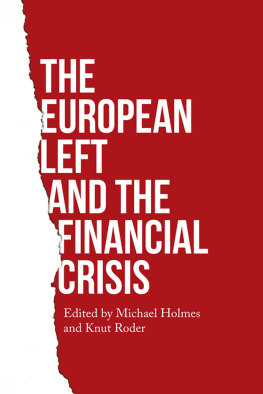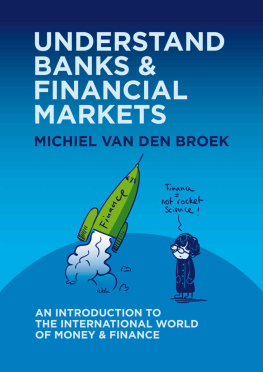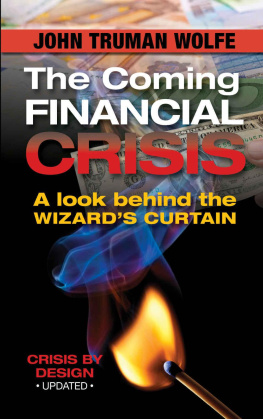UNFINISHED BUSINESS

Copyright 2017 International Monetary Fund
All rights reserved. This book may not be reproduced in whole or in part, in any form (beyond that copying permitted by Sections 107 and 108 of the U.S. Copyright Law and except by reviewers for the public press) without written permission from the publishers.
Nothing contained in this book should be reported as representing the views of the IMF, its Executive Board, member governments, or any other entity mentioned herein. The views expressed in this book belong solely to the authors.
For information about this and other Yale University Press publications, please contact:
U.S. Office:
Europe Office:
Set in Minion Pro by IDSUK (DataConnection) Ltd
Printed in Great Britain by TJ International Ltd, Padstow, Cornwall
Library of Congress Control Number: 2017942755
ISBN 978-0-300-22563-1
A catalogue record for this book is available from the British Library.
10 9 8 7 6 5 4 3 2 1
To Susan, Elisa, and Stefan
For giving me joy and purpose
CONTENTS
FIGURES
ACKNOWLEDGEMENTS
Many people have helped me with this book. In addition to the IMF, which granted me a sabbatical, pride of place goes to Adam Posen, the director of the Peterson Institute for International Economics, the institution that gave me an office and made me a senior fellow, which allowed me to interact with their fantastic fellows and staff. In particular, during my stay, in addition to Adam, I benefited enormously from conversations with Fred Bergsten, Bill Cline, Nicolas Vron, Simon Johnson, Morris Goldstein, Joe Gagnon, Ana Gelpern, Steve Weisman, Jacob Kierkegaard, Patrick Honohan, Olivier Blanchard, Chad Brown, Monica De Bolle, Marcus Noland, Jrmie Cohen-Setton, Caroline Freud, Olivier Jean, Rory MacFarquhar, Jeff Schott, Ted Truman, Dave Stockton, and Jeromin Zettelmeyer. Their intellectual generosity is an example for us all. Additional important inputs came from Ashok Bhatia of the IMF, who explained the US financial system in terms even I could understand, David Marsh from OMFIF, who constantly encouraged me, and Barry Eichengreen of Berkeley and Harold James of Princeton, who both commented on earlier versions of the text. Many thanks also go to Taiba Batool, my editor, who helped knock the book into shape, and Anish Tailor of the Peterson and Jelle Barkema of the IMF for their invaluable research assistance. Thanks also to Lauren Pettifer, Melissa Bond, and Jennie Doyle at Yale University Press for helping with the finishing touches. Finally, it is important to acknowledge that this book represents my own views, and does not necessarily represent those of the IMF, IMF policy or the Peterson Institute for International Economics.
INTRODUCTION
The Needle (and the Damage Done)
It is often said that it takes a decade to turn current events into history, a reckoning that probably makes this the first true history of the North Atlantic financial crisis. The moniker is apt, as this narrative chronicles how after 1980 a succession of missteps by financial regulators, aided and abetted by policy makers intellectual blind spots, made the North Atlantic banking system so brittle that the failure of a medium-sized US investment bank toppled the world into the worst recession since the 1930s and the Euro area into a depression. It highlights the crucial and under-appreciated role played by increasingly shaky northern European mega-banks in financing remarkably similar financial bubbles in the US and southern Europe, which parasitically intertwined with the better known but equally misunderstood expansion of shaky US shadow banks. The common origin of the US and Euro area crises has been missed because it was overlaid by the longer and deeper Euro area recession coming from a flawed currency union that left often cash-strapped national governments responsible for expensive bank rescues. While some of the mistakes in the North Atlantic economy have been rectified, there remains an awful lot of unfinished business before we can be confident that the world will not continue to face serial financial instability and lackluster growth.
* * *
The Needle
The North Atlantic crisis is generally dated from the early afternoon of August 9, 2007, Paris time, when this press release flashed on dealers screens:
BNP Paribas Investment Partners temporally suspends the calculation of the Net Asset Value of the following funds: Parvest Dynamic ABS, BNP Paribas ABS EURIBOR and BNP Paribas ABS EONIA
The complete evaporation of liquidity in certain market segments of the US securitization market has made it impossible to value certain assets fairly regardless of their quality or credit rating. The situation is such that it is no longer possible to value fairly the underlying US ABS assets in the three above-mentioned funds. We are therefore unable to calculate a reliable net asset value (NAV) for the funds.
In order to protect the interests and ensure the equal treatment of our investors, during these exceptional times, BNP Paribas Investment Partners has decided to temporarily suspend the calculation of the net asset value as well as subscriptions/redemptions, in strict compliance with regulations, for the following funds:
Parvest Dynamic ABS effective 7 August 2007, 3pm (Luxembourg time)
BNP Paribas ABS Euribor and BNP Paribas ABS Eonia effective 7 August 2007, 1pm (Paris time)
The valuation of these funds and the issue/redemption process will resume as soon as liquidity returns to the market allowing NAV to be calculated.
In the continued absence of liquidity, additional information on the envisaged measures will be communicated to investors in these funds within one month of today.
Thursday, August 9 was an unappealingly cold and windy day in Paris even before this chilly financial message. Indeed, it turned out to be the coldest day of the month, with an overnight low of 11 degrees Celsius (51 degrees Fahrenheit) rising to a modest 18 degrees Celsius (64 degrees Fahrenheit) in the afternoon. On top of that it was blowy, with average winds of 16 kilometers per hour (10 miles per hour). At least it did not rain, in contrast to the otherwise similar days before and after. In short, it was not a pleasant few days to be a banker in Paris. Not that there were many bankers left in the city. The French predilection for taking August as vacation left Paris largely bereft of workers, replaced by the usual throngs of (in this case often shivering) tourists.
The head of BNP Paribas asset management, Gilles Glicenstein, authorized the press release from the semi-deserted BNP Paribas offices just a block from the Arc de Triomphe. Gilles was a well-respected up-and-coming banker who was known for being decent and careful, as well as for running marathons. He had joined BNP after four years at the French Ministry of Finance. He never regretted his decision to send out the press release, which he firmly believed had been the right thing to do. Tragically, he died of cancer in the spring 2009 at age 44.
The press release underlined how problems initially seen as a minor blip in US mortgages were affecting the European as well as US banks. The certain segments of the mortgage market that were in distress were securities that bundled subprime mortgages or securities that put these assets together into more complex collateralized debt obligations (CDOs) or even into CDOs-squared (CDOs of CDOs). The roaring market in these products rapidly collapsed as it became apparent that US house prices were falling, something that the proponents of these products had assured investors had not happened on a national basis in the United States in the sixty years since World War II. This unexpected development undid a market in which subprime mortgages had increasingly been issued with minimal assessment of the creditworthiness of the borrowers on the happy assumption that continued house price increases would validate the loans. The mortgage-backed securitization market collapsed along with its central dogma.
Next page












